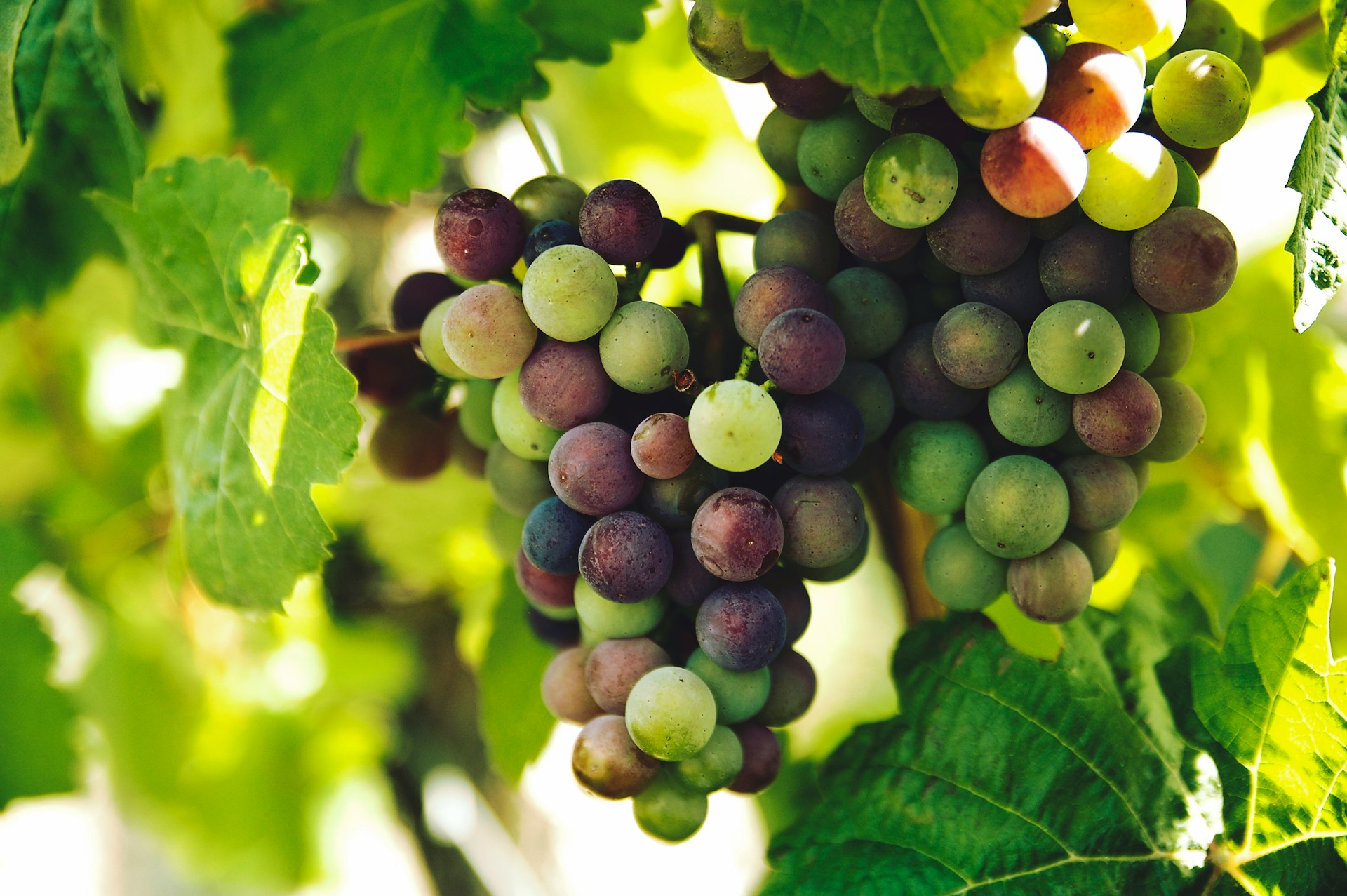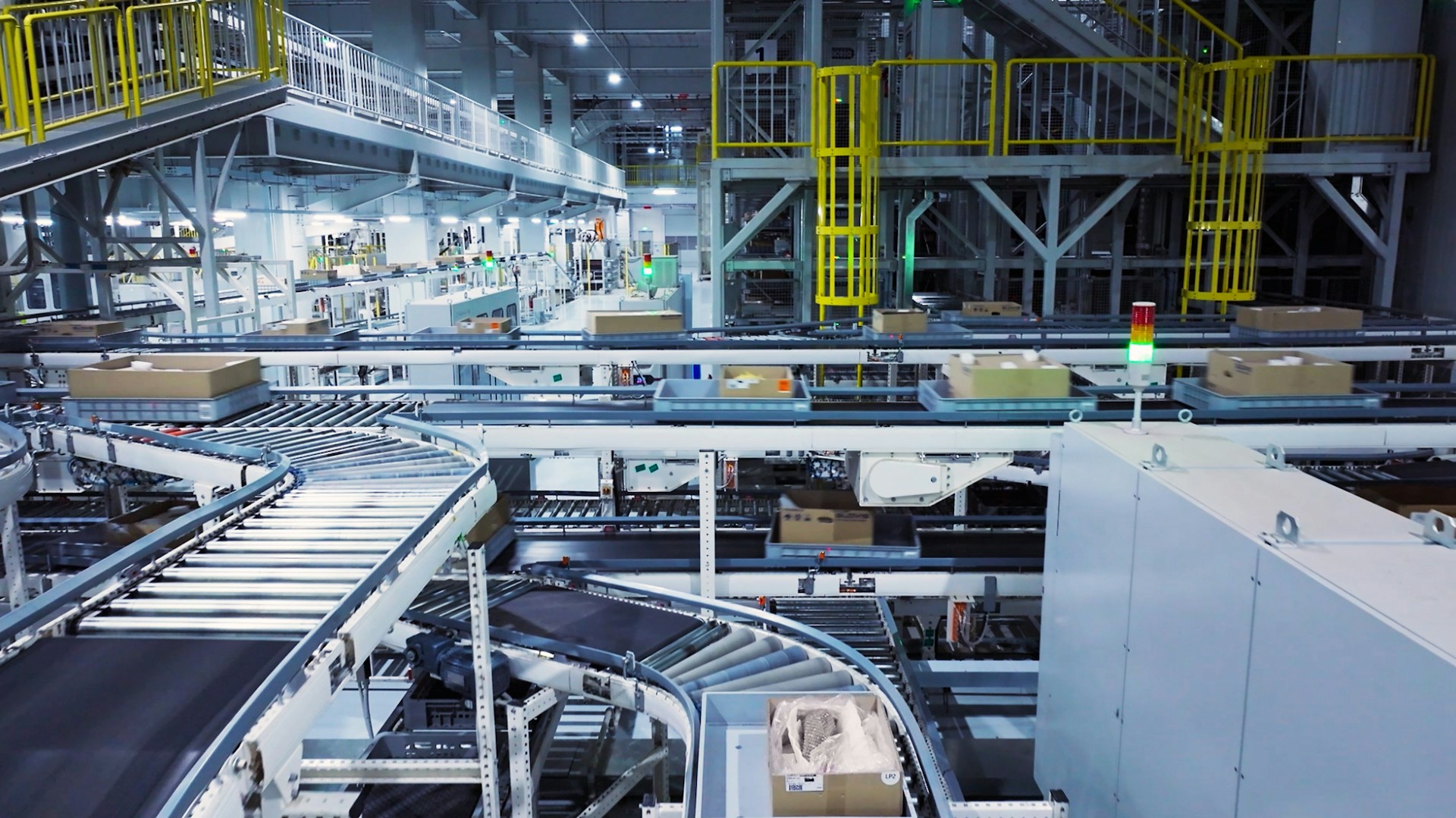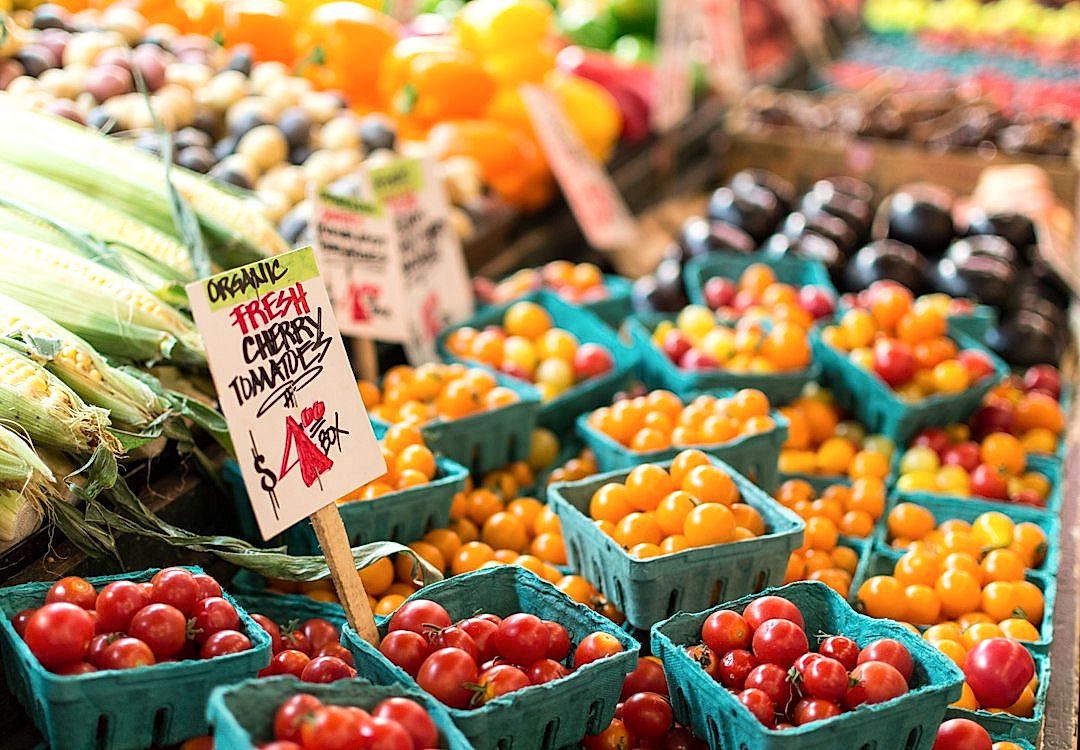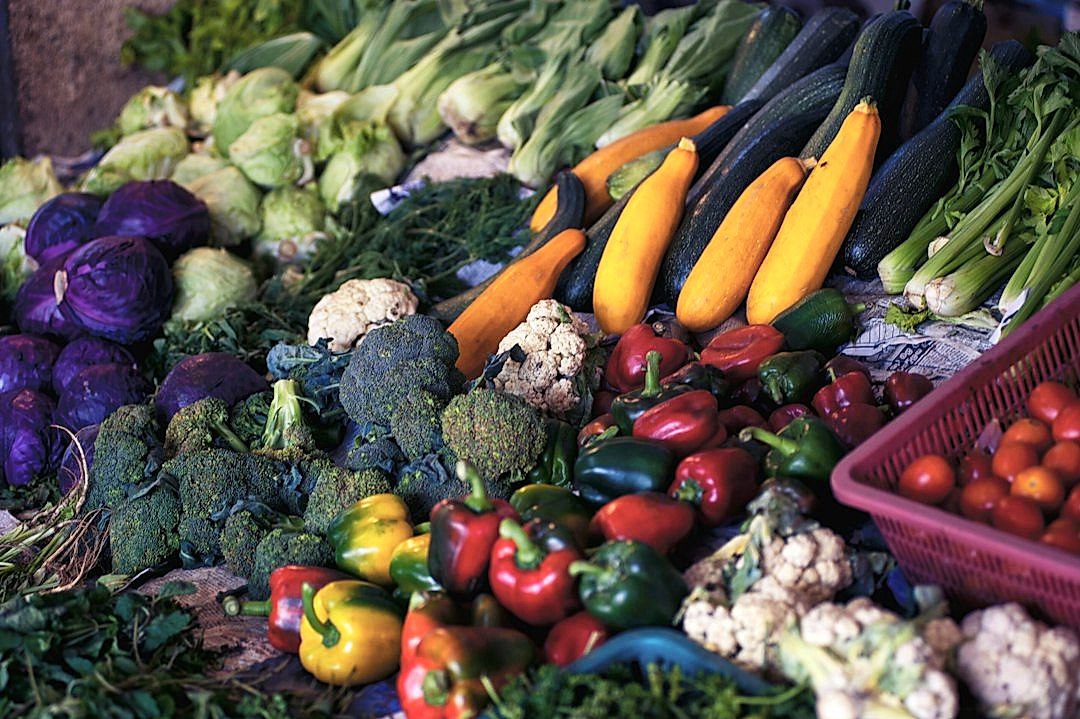Optimizing the efficiency levels of produce packing can revolutionize the agricultural sector significantly.
With emerging technological innovations, it is now more achievable than ever before.
Tech advancements, ranging from automation to machine learning, can be used to streamline every aspect of the packing process.
In the past, production and supply chain issues have led to enormous costs and waste.
Presently, the use of technology to tackle these challenges is no longer fiction.
This blog will delve into various innovative technological upgrades that can enhance the performance and efficiency of your produce packing operations.
Contents
Tech Upgrades For Enhanced Produce Packing Efficiency
1. Automated Sorting Systems
Automated sorting systems have shown significant potential for improving produce packing efficiency across various industries.
Their adoption in the agriculture sector makes a lot of sense especially in the era of smart farming and precision agriculture.
At its core, the technology routes and sorts different products based on specific criteria like size, weight, and condition, reducing the need for manual labor.
These systems employ advanced vision systems, conveyors, and robotics to ensure fast and accurate sorting.
Automated sorting technology uses precision imaging and sensors to capture the internal and external characteristics of every fruit or vegetable on the line, enabling detailed sorting and grading based on color, size, shape, and even internal defects.
They make it possible to achieve high-speed sorting that would be difficult to accomplish by hand.
Which results in less damaged produce and reduced postharvest losses, improving the overall quality and shelf life of the sorted produce.
Not to mention, automation reduces reliance on manual labor, thereby limiting human error and making operations more efficient.
It also ensures consistent output regardless of shifts or labor availability, allowing for steady, round-the-clock operation.
Bear in mind that this efficiency is not only reflected in costs saved but also in the improvement of the final product that reaches the consumer.
Recent advancements in artificial intelligence (AI) have increased the accuracy and efficiency of automated sorting systems.
Beyond physical characteristics, these systems can now identify and sort produce based on ‘invisible’ attributes such as sugar content or internal defects by using spectroscopic and hyperspectral imaging.
Automated sorting systems have also become more flexible and can handle a wide variety of commodities, moving beyond simple tasks to perform complex sorting functions.
However, the adoption of automated sorting systems requires a significant upfront investment, and operation skills training for the team.
But considering the long-term benefits such as increased efficiency and reduced waste, the return on investment becomes quite apparent.
With constant technological improvements, these automated sorting systems valuably contribute towards a more sustainable and efficient agricultural sector.
2. Robotics for Picking and Packaging
Investments in robotic technologies have proven invaluable in the realm of produce packing, promoting both efficiency and precision.
Automated picking robots, for instance, can perform the task of selecting ripe produce with an accuracy that surpasses human ability in speed and precision.
These robots, equipped with advanced vision systems and machine learning technologies, are capable of identifying the ripeness of fruits and vegetables based on their color, size, and other parameters.
Automation cuts back on manual labor, minimizing the risk of damage usually associated with human handling.
Moreover, the utilization of robotics for packaging has also seen incredible leaps in recent years.
Unlike traditional methods, robotic packaging systems can sort, package, and label produce at a much higher speed.
Moreover, these packaging robots can be programmed to handle different types of produce, adjusting to various shapes and sizes, therefore making them versatile for any type of operation.
The implementation of this system saves time and reduces the chances of error, thus leading to increased productivity and accuracy in packing processes.
Additionally, these technologies are also capable of improving hygienic standards by reducing human contact with the produce, thereby limiting the spread of pathogens.
While the initial cost of these robotic systems may seem high, the increase in efficiency and reduction in error rates justify this investment in the long run.
Several packing firms have already adopted these technological advancements, achieving significant success in enhancing their packing efficiency.
Incorporating robotics into the picking and packing process thus emerges as a game-changer in modern agricultural practices, achieving superior efficiency and improved quality.
By leveraging the full potential of these advanced robotics technologies, packing industries can truly revolutionize their operations and redefine what it means to achieve optimal packing efficiency.
Therefore, to keep up with demands and improve operations, investing in robotics for picking and packaging is an essential tech upgrade for produce packing firms.
3. Advanced Conveyor Belt Systems
The integration of advanced conveyor belt systems is a key component in upgrading the efficiency of fresh produce packing.
These advanced systems are designed to optimize the transportation process of fruits and vegetables from one point to another within the packing facility.
Considerable efforts have been dedicated in recent times to the development and enhancement of conveyor belt systems specifically tailored to the needs of the produce packing industry.
The replacement of traditional conveyor systems with advanced ones results in increased throughput and reduced manual handling of the produce.
Moreover, advanced conveyor systems are engineered to handle delicate produce gently, reducing damages and keeping quality intact, which, in turn, enhances the overall packing efficiency.
It is essential to mention that these conveyor systems come with automated sorting capabilities as well, further streamlining the packing process.
Often, these conveyor systems are equipped with automated cleaning mechanisms to maintain hygienic conditions and to assure food safety regulations are met.
As a result of these features, there is a noticeable reduction in the amount of labor required, as manual sorting, handling, and cleaning tasks are minimized.
One cannot underestimate the role of technology in enhancing conveyor systems, the use of AI and IoT in conveyor systems has resulted in significant improvements in their efficiency.
The integration of AI technologies helps in making real-time adjustments to the conveyor operation based on the type and quantity of produce being processed, hence reducing waste and saving time.
Similarly, the incorporation of IoT methods provides real-time monitoring and maintenance alerts to ensure seamless operation and avoid unexpected breakdowns.
The personalized configurations of these systems also allow for easy segmentation of different types of produce.
They allow for quicker, more efficient packing methods, which can meet customized packing requirements.
On a final note, while advanced conveyor systems play a significant role in enhancing produce packing efficiency, it is the integration of these systems with other tech upgrades like robotic pickers, AI-based quality control, precision farming techniques, and effective supply chain management software that formulates a comprehensive solution.
4. AI-driven Quality Control
In the world of produce packing efficiency, one of the latest tech upgrades bringing transformative changes is AI-driven quality control.
Unlike traditional methods, AI (Artificial Intelligence) algorithms in quality control systems effectively scan produce for defects or irregularities swiftly, thereby improving efficiency and accuracy.
They work by making use of advanced machine learning algorithms to identify patterns and anomalies that human eyes may potentially miss.
Detailed images of the produce items are captured and then analyzed by these AI systems.
Using preset standards, the AI algorithms identify disparities in size, color, weight, or appearance, tagging any produce that fall beyond these parameters as defective.
This AI-powered approach is capable of increasing the speed of sorting and packaging, leading to better produce packing efficiency.
Besides speeding up the quality control process, AI systems also bring about a significant reduction in human error.
Since these systems can be trained to learn and improve over time, they significantly reduce the incidence of false positives and negatives.
AI technology also allows for the implementation of higher quality standards, raising the bar on the quality of produce that can be packed and sold.
With this technology, businesses can ensure that their customers receive consistently high-quality produce, irrespective of the volume being packed or the speed at which it is being done.
This innovation also helps companies to reduce waste significantly.
Defective items are immediately removed from the packing process, hence sparing additional resources from going into the packing of produce that is eventually going to be rejected.
The net result of implementing AI in quality control processes is an increase in both productivity and profitability for produce packaging companies.
Moreover, consumer satisfaction is also boosted, thanks to the uniform quality of the produce delivered.
Indeed, AI-driven quality control is a game-changing tech upgrade that is set to redefine the future of produce packing efficiency.
Deploying it can help companies gain a significant edge in an increasingly competitive marketplace.
5. IoT for Real-time Monitoring
The Internet of Things (IoT) technology revolutionizes the range of processes in different sectors, include the field of produce packing.
The technological incorporation of real-time monitoring systems enhances the efficiency of produce packing systems immensely.
This improvement in productivity is facilitated by the fact that IoT allows for the tracking and monitoring of every stage of the packing process.
IoT sensors can collect data on key variables such as temperature, humidity, and light levels, advancing the quality control measures in place.
This technology gives packing facilities access to critical information that ensures the produce remains fresh and in good condition during the packing process.
In the event of any irregular parameters, alerts are triggered to immediately address the issue, thereby eliminating losses that would otherwise result from spoilage or damage.
The ability IoT sensors give to the packing facility to react in real-time to any changes in the warehouse environment is integral to improving the success rates of preserving the produce.
Additionally, the system can be programmed to preemptively adjust climate control mechanisms based on predictive analysis algorithms, taking the effectiveness of quality control to a new level.
Another major benefit of using IoT in the packing process is the transparency and traceability it brings to the supply chain.
By collecting constant and accurate data about the produce, IoT contributes to detailed and verifiable batch tracking, which enhances confidence and accountability in the supply chain management.
Real-time monitoring using IoT can also help optimize efficiency and workflow by better managing resources and reducing bottlenecks in the packing process.
With IoT, packing processes can be programmed and automated based on data and trends identified via real-time monitoring, allowing a more streamlined and efficient workflow.
As more and more produce packing facilities adopt IoT, a large amount of big data is being accumulated and can be used for predictive analysis and process improvement.
This makes IoT not just a tool for real-time monitoring but also a strategic asset for long term planning and problem-solving in produce packing.
Moreover, the feedback system of IoT technology is invaluable in making immediate corrections that save time and resources in the overall packing process.
In a nutshell, real-time monitoring with IoT technology for produce packing brings about increased efficiency, improved quality control, enhanced transparency, and more informed decision-making within this sector.
6. Precision Farming Technologies
The agricultural industry has seen a dramatic increase in efficiency due to the implementation of precision farming technologies.
These technological advancements have revolutionized the way farmers monitor their crops, leading to higher efficiency in produce packaging.
One of the most significant developments in this area is the use of drones for crop monitoring.
Drones can capture detailed aerial images of fields, allowing farmers to identify areas that require attention or improved cultivation methods.
This real-time data drastically optimizes the harvesting process by ensuring only ripe and healthy produce is picked for packaging.
In addition to drones, sensor technology plays a crucial role in precision farming.
These sensors can be fitted to farming machinery or positioned throughout a field to monitor specific parameters such as soil moisture, temperature, and nutrient levels.
With this information, farmers can apply precise amounts of water or fertilizer to each section of their fields, resulting in healthier crops and reduced waste.
Robotic harvesters are another element of precision farming technology that can increase packing efficiency.
These machines can work non-stop, harvesting and packaging crops at optimum ripeness, thus reducing the amount of produce wasted due to over or under ripening.
The integration of such technologies also can lead to drastic improvements in yield quantity and quality.
The efficiency gains from precision farming technologies are not limited to the field; they can also improve logistics and packaging operations.
By knowing exactly where and when crops will be ready for harvest, packing operations can be effectively scheduled, and produce can reach consumers faster.
Moreover, the data gathered by these technologies can be used to anticipate demand and plan future harvests, allowing for improved resource allocation and financial planning.
The packaging process itself can also benefit from these technologies as sophisticated sorting and packaging systems can be programmed to handle crops deftly, reducing damage and thereby, waste.
So, the application of precision farming technologies goes beyond the field, providing a more holistic approach to farming that enhances efficiency at every step, from planting to packaging to delivery.
Ultimately, these advancements are not just improving farming practices; they are shaping the future of our global food supply chain.
7. Supply Chain Management Software
Utilizing Supply Chain Management Software is one of the most promising tech upgrades that can significantly enhance the efficiency of produce packing.
Automation of supply chain processes that were previously manually handled can save a large amount of time, reduce errors, and increase productivity.
The software can lead to a more streamlined process by coordinating the packing, transportation, and delivery of produce.
With this technology, businesses can manage their supply chain with a level of precision and efficiency that cannot be achieved through manual processes.
Features like real-time inventory tracking, order fulfillment, and delivery scheduling can be integrated into the system.
This not only provides a centralized platform for all operations but also enables easy synchronization of tasks.
Moreover, Supply Chain Management Software facilitates data-driven decisions, providing the ability to anticipate demand, adjust production levels, and optimize delivery routes accordingly.
Such meaningful insights are possible due to sophisticated data analysis that forms a part of these software solutions.
Another crucial aspect of this software is its efficient record-keeping feature which ensures easy traceability of produce.
In case of a product recall or quality issue, it becomes straightforward to track back through the supply chain and identify the source of the problem.
This detailed record helps to address any potential issues promptly, thus ensuring that consumer trust is maintained.
With the software’s ability to integrate with other systems such as warehouse management and transportation software, a seamless supply chain operation can be achieved.
It also enables effective collaboration between different stakeholders, including the packing team, logistics partners, and even the end-users.
From reducing paperwork to enabling faster response times, supply chain management software holds the potential to drastically improve the produce packing process.
Therefore, investment in a proficient Supply Chain Management Software can significantly contribute towards leveraging technology to its full potential and enhancing overall packing efficiency.
The Bottom Line
As the world continues to embrace digital transformation, it is clear that technology is commensurately evolving the supply chain and logistics sector.
Automated sorting systems offer improved efficiency; robotics simplify picking and packaging, and advanced conveyor belt systems enhance transportation.
Furthermore, AI-driven quality control sharpens product scrutiny, while IoT enables real-time monitoring to optimize operational management.
Precision farming technologies revolutionize agricultural processes, and supply chain management software brings all these components into a unified operation for a seamless flow.
It’s undeniable that these technological advancements wield profound impacts, substantially bolstering productivity, accuracy, and overall profitability in the supply chain and logistics.




